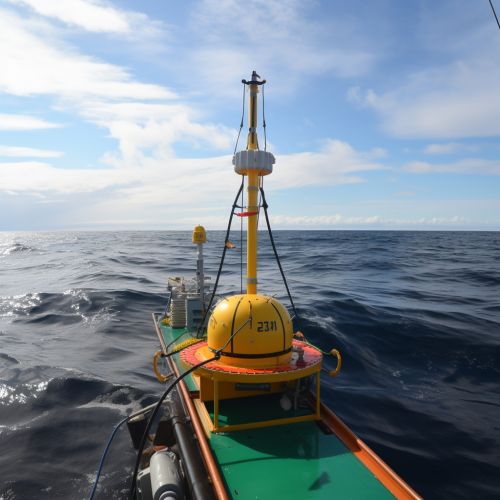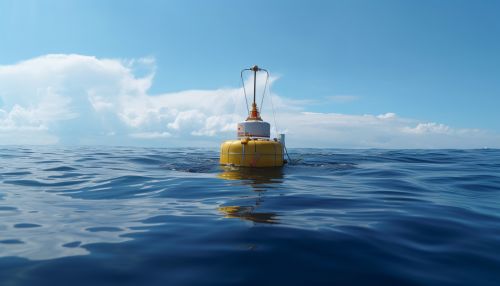Acoustic Doppler Current Profilers (ADCP)
Introduction
An Acoustic Doppler Current Profiler (ADCP) is a hydroacoustic instrument used to measure water current velocities over a depth range using the Doppler effect of sound waves scattered back from particles within the water column. The ADCP is a significant advancement in the field of oceanographic measurement, providing high-resolution, accurate data on water currents.


History and Development
The development of the ADCP was a significant milestone in oceanographic research. Prior to its invention, oceanographers relied on less precise methods such as mechanical current meters or drogues. The first ADCP was developed in the late 1970s by RD Instruments, a company specializing in marine technology.
Working Principle
The ADCP operates based on the Doppler shift principle, which states that the frequency of a wave changes if the source and the observer are moving relative to each other. In the context of an ADCP, the sound waves are transmitted into the water, and the frequency of the returning echo from the particles in the water is measured. The difference in frequency between the transmitted and received sound waves is used to calculate the velocity of the water current.
Types of ADCP
There are several types of ADCPs, each designed for specific applications. These include vessel-mounted ADCPs, bottom-mounted ADCPs, and profiling ADCPs. Each type has its unique characteristics and uses.
Vessel-Mounted ADCPs
Vessel-mounted ADCPs are installed on the hull of a ship or boat. They measure the velocity of the water column beneath the vessel while it is moving. This type of ADCP is commonly used for navigation and for conducting surveys of water currents.
Bottom-Mounted ADCPs
Bottom-mounted ADCPs are deployed on the seafloor and measure the velocity of the water column above them. They are often used in long-term monitoring of ocean currents and in studies of sediment transport.
Profiling ADCPs
Profiling ADCPs are designed to measure the velocity profile of the water column from a fixed location. They can be deployed from a vessel or mounted on the seafloor. Profiling ADCPs are commonly used in oceanographic research and environmental monitoring.
Applications
ADCPs have a wide range of applications in various fields. They are used in oceanography, hydrology, limnology, and civil engineering, among others.
Oceanography
In oceanography, ADCPs are used to measure ocean currents, waves, and turbulence. They provide valuable data for studying ocean circulation, climate change, and marine ecosystems.
Hydrology
In hydrology, ADCPs are used to measure river flow and discharge. They provide accurate, high-resolution data that is essential for flood forecasting, water resource management, and environmental monitoring.
Limnology
In limnology, ADCPs are used to study the physical properties of lakes and other inland waters. They provide data on water currents, temperature, and sediment transport, which are important for understanding lake dynamics and ecosystem health.
Civil Engineering
In civil engineering, ADCPs are used in the design and monitoring of hydraulic structures such as dams, bridges, and harbors. They provide data on water velocities and sediment transport, which are critical for ensuring the safety and efficiency of these structures.
Limitations and Challenges
While ADCPs are powerful tools, they also have limitations and challenges. These include the need for calibration, sensitivity to sound speed variations, and difficulties in measuring near-surface and near-bottom currents. Despite these challenges, ADCPs remain the instrument of choice for many applications due to their high resolution and accuracy.
Future Developments
The field of ADCP technology continues to evolve, with ongoing research and development aimed at improving accuracy, resolution, and ease of use. Future developments may include advancements in signal processing, improvements in hardware, and the integration of ADCPs with other oceanographic instruments.
